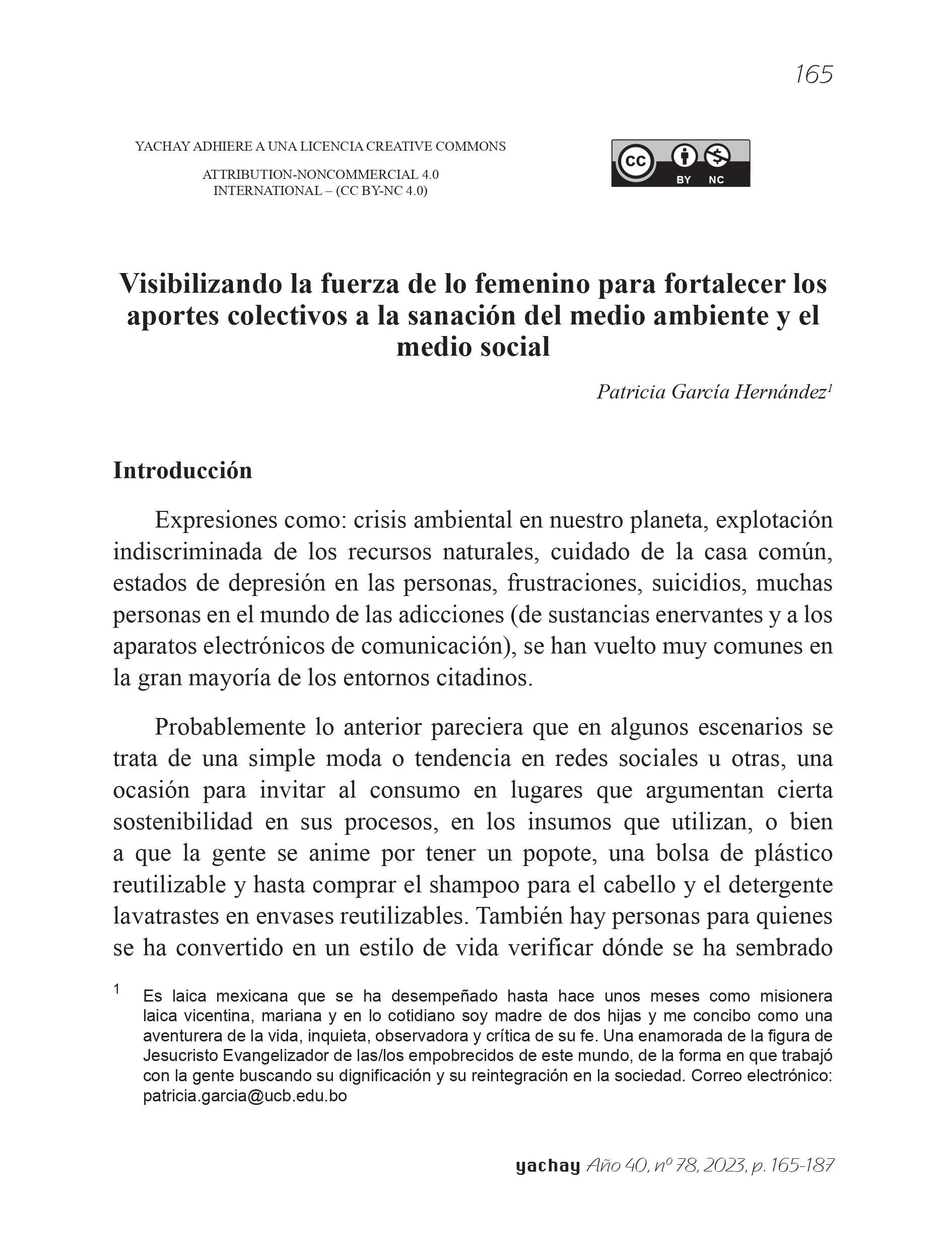Making visible the strength of the feminine to strengthen collective contributions to the healing of the environment and social sphere
DOI:
https://doi.org/10.35319/yachay.202378106Keywords:
Femenino, Cuidado, Madre Tierra, AgradecimientoAbstract
Patricia García points to the inherent resources in women to care for life in her reflection: "Making visible the strength of the feminine to strengthen collective contributions to the healing of the environment and the social sphere." Both Nature and women are oriented towards nurturing life and have been subjected to abuses. Women's work is often undervalued for being invisible, not remunerated according to capitalist criteria. Drawing from her own experience of grief, the author links self-care, mutual care, and social issues with our treatment of the environment. The figures of the hemorrhaging woman (Mk 5:21-34) and the Syrophoenician woman (Mk 7:24-30) are very inspiring for their tenacity in seeking health, as well as the martyrs for their courage in defending Mother Earth. To promote the care of life and establish alternative communities to consumerist styles, dialogue with male sensitivity as well as with ancestral wisdom and various disciplines is necessary. The figures of Ruth and Naomi remind us of the importance of gratitude.
Downloads
References
Achondo Moya, Pedro Pablo. Iglesia híbrida: aproximación a las comunidades de Jesús. Santiago: San Pablo, 2020.
Biblia de Jerusalén, Nueva edición totalmente revisada. Bilbao: Desclée de Brouwer, 2009.
Brown, Joan Martin. “Cuando las mujeres dicen no”. El correo de la UNESCO 3, mayo de 1992.
CELAM. «Centro de Formación CEBITEPAL.» Consejo Episcopal Latinoamericano y Caribeño. Un método para la nueva evangelización.
Acceso el 03 de junio de 2023. https://www.celam.org/cebitepal/images/img_noticias/doc15b9919046b353_12092018_747am.pdf.
Coordinación Ecuménica Teología India Mayense. El aroma de las flores en la Milpa Mayense. Ofrenda de nuestro caminar teológico.
S.l; s.e, 2015.
Francisco. Evangelii Gaudium. México: Obra Nacional de la Buena Prensa, A.C., 2013.
Francisco. Laudato Si´. Roma: Sapientia, 2015.
López Alfonso, Honorio. Algunas mujeres nos han sorprendido. Ciudad de México: Hijas de la Caridad, 2008.
ONU. “Mujeres”.Acceso el 06 de junio de 2023. https://www.unwomen.org/es/digital-library/publications/2012/6/the-future-women-want-a-vision-of-sustainable-development-for-all#:~:text=Hace%2020%20a%C3%B1os%2C%20los%20Estados,para%20lograr%20un%20desarrollo%20sostenible.
Romero Chamba, Luz María. Genio Femenino, Un nuevo estilo misionero. Cochabamba: Itinerarios Editorial, 2018.
Sínodo Amazónico, Amazonía: nuevos caminos para la Iglesia y para una ecologia integral, 6-27 octubre 2019: instrumentum laboris
, acceso el 24 de septiembre de 2023, https://press.vatican.va/content/salastampa/es/bollettino/pubblico/2019/06/17/ins.html.

Published
How to Cite
Issue
Section
License
Copyright (c) 2023 Yachay

This work is licensed under a Creative Commons Attribution-NonCommercial 4.0 International License.
De acuerdo a la Ley 1322 de Derechos de Autor en Bolivia, la Revista YACHAY respeta los derechos morales de los autores, amparando la parternidad e integridad de sus obras publicadas.




